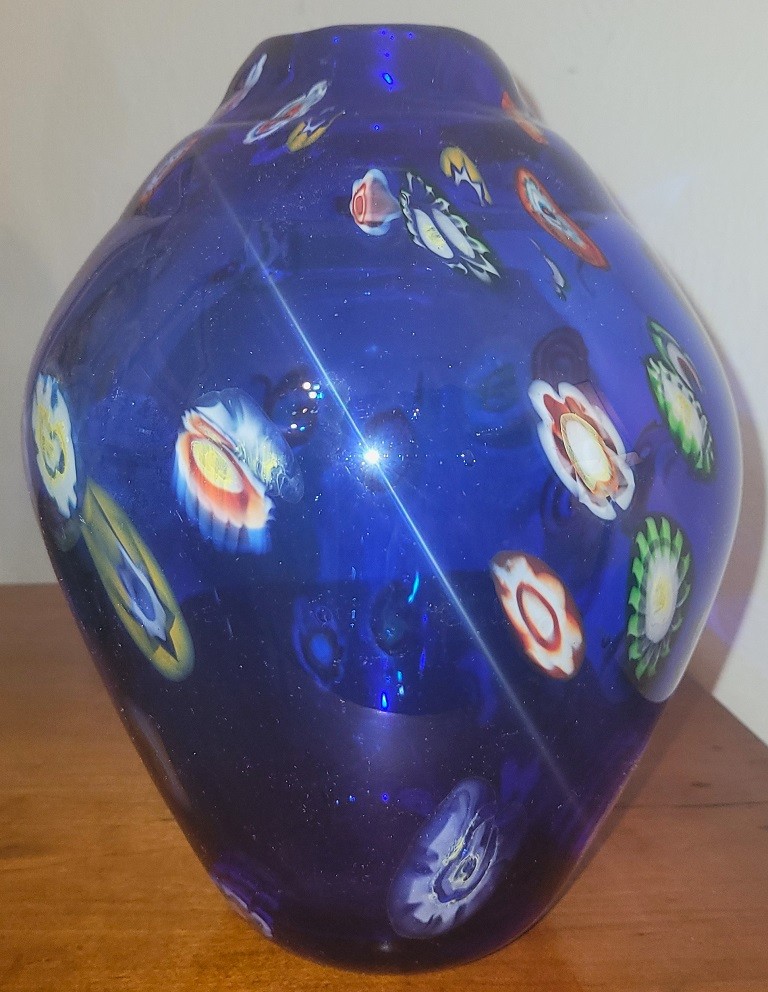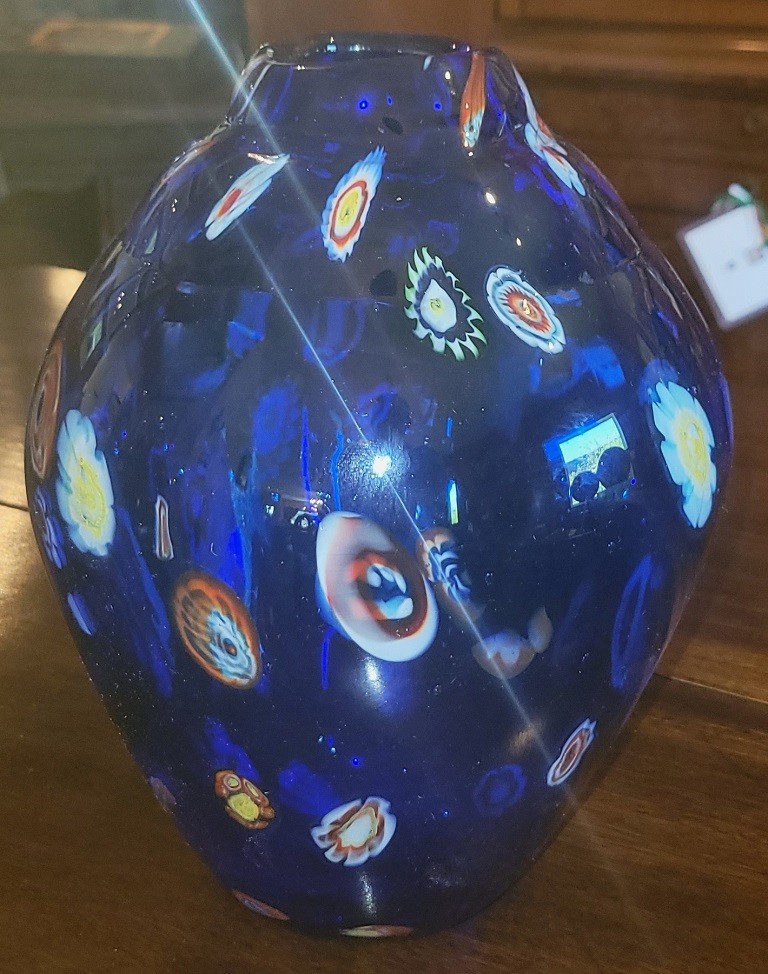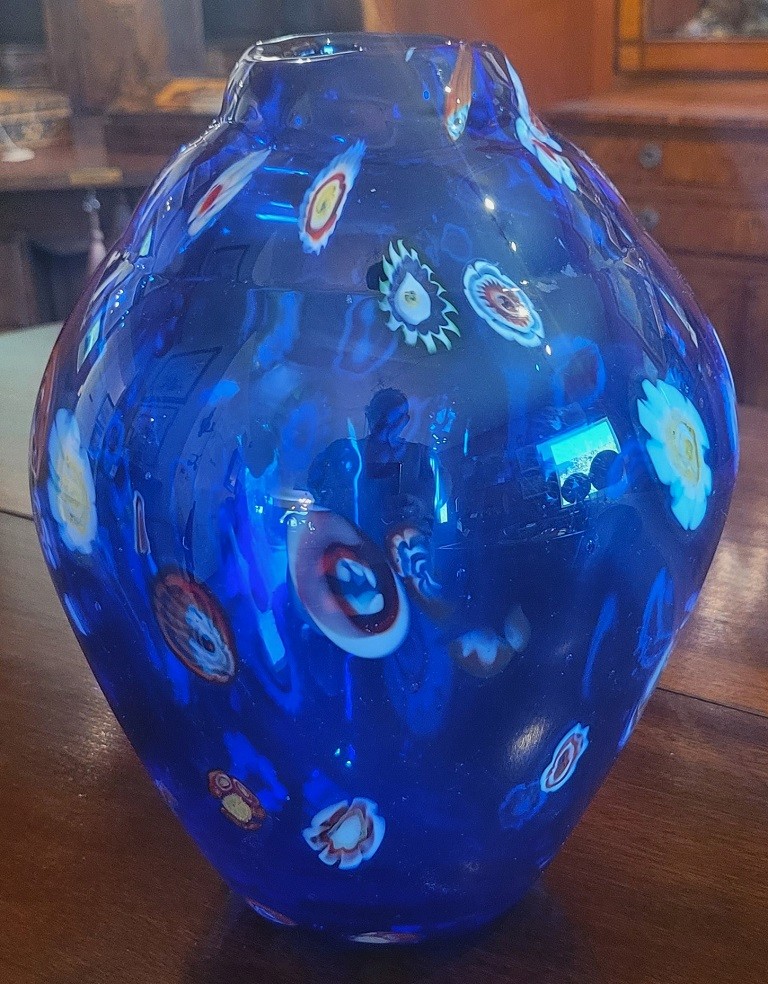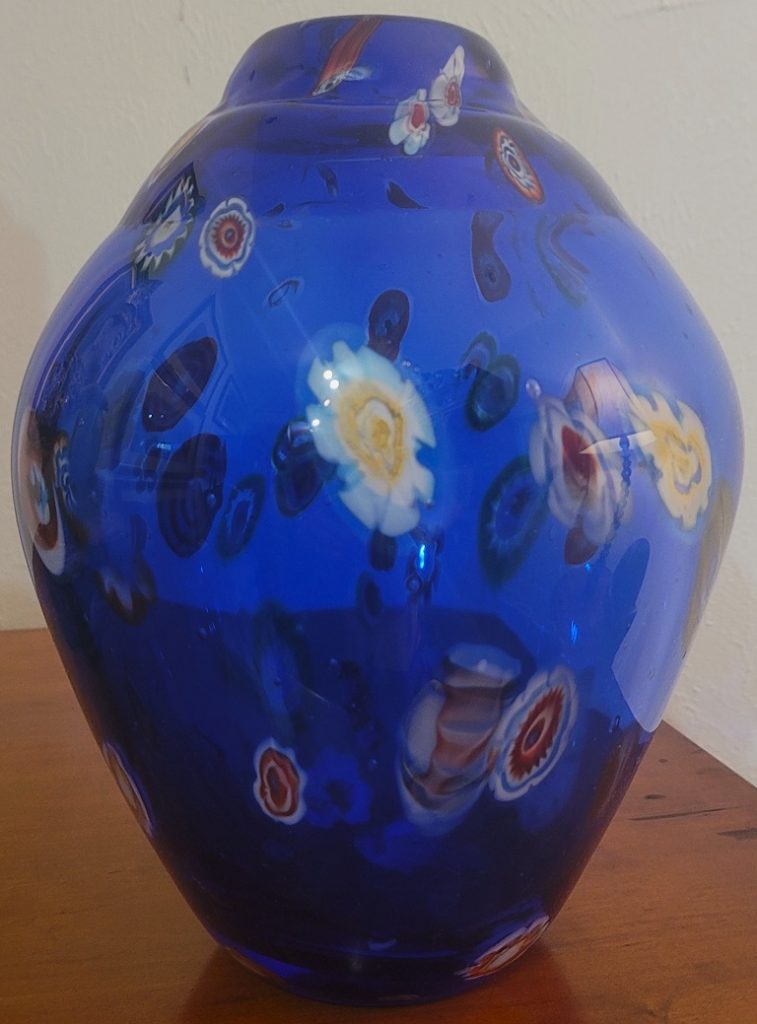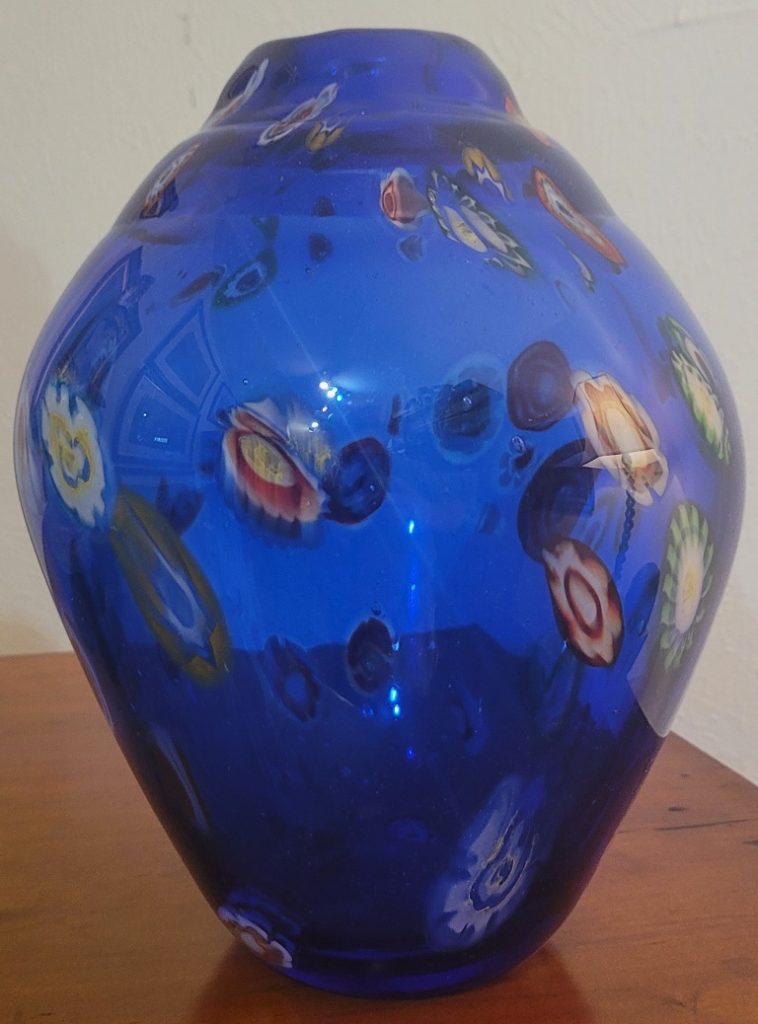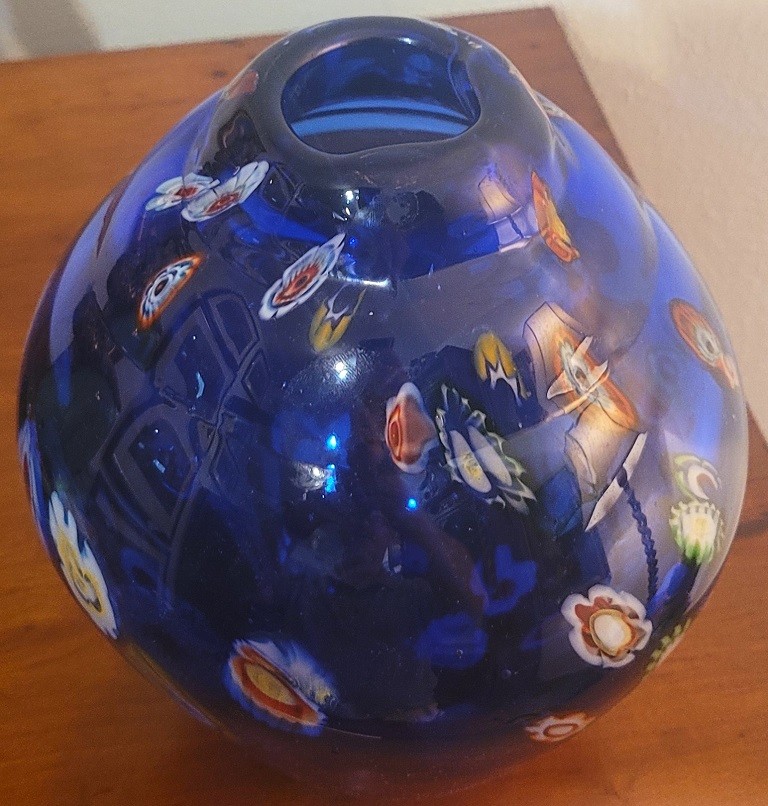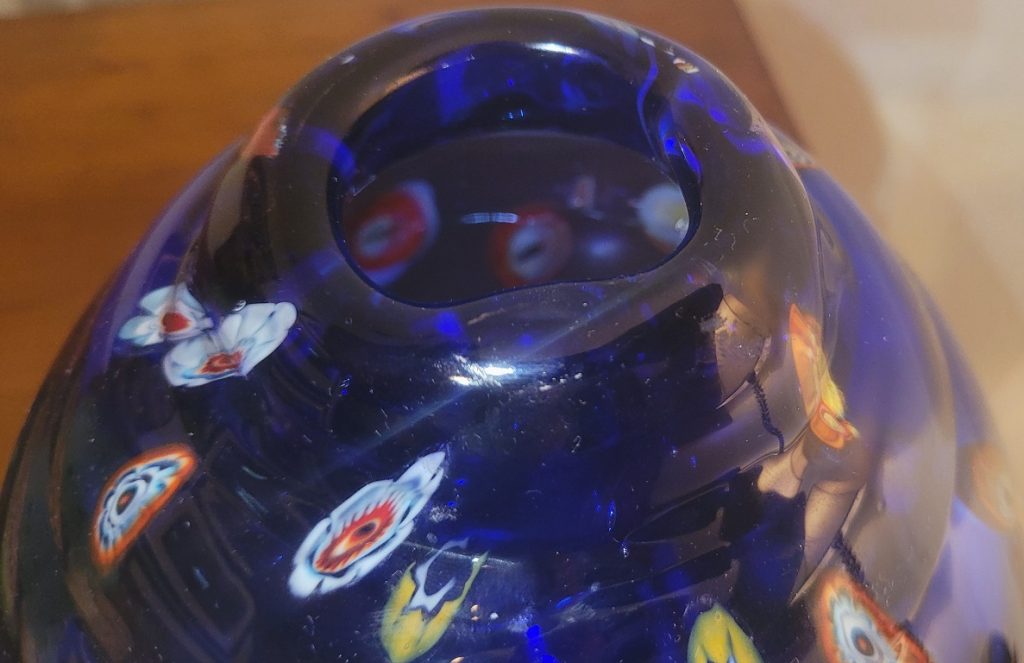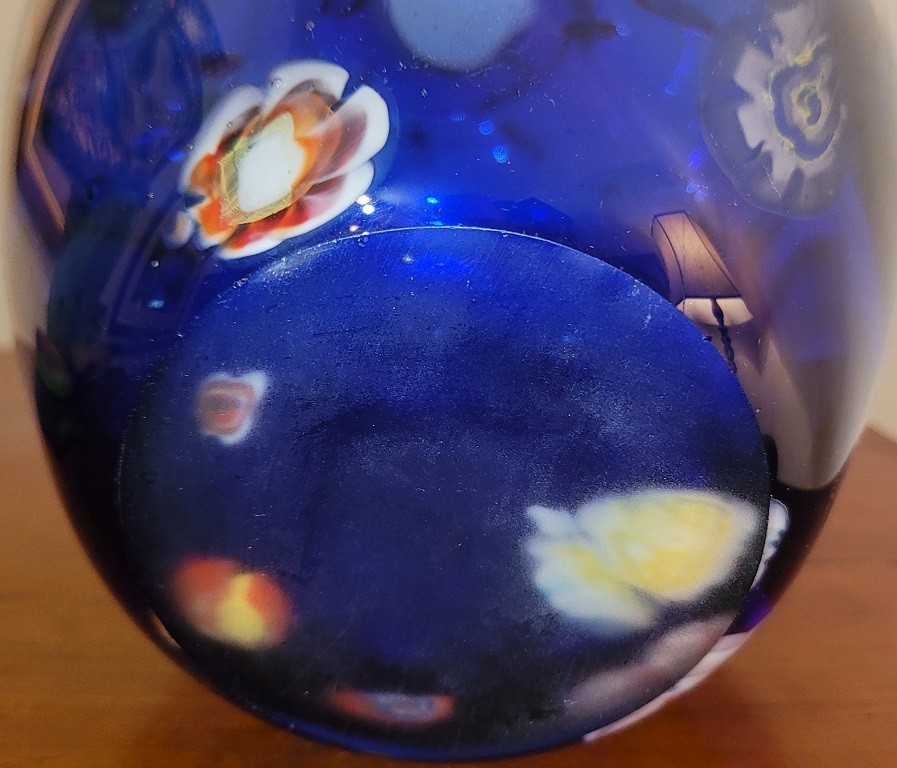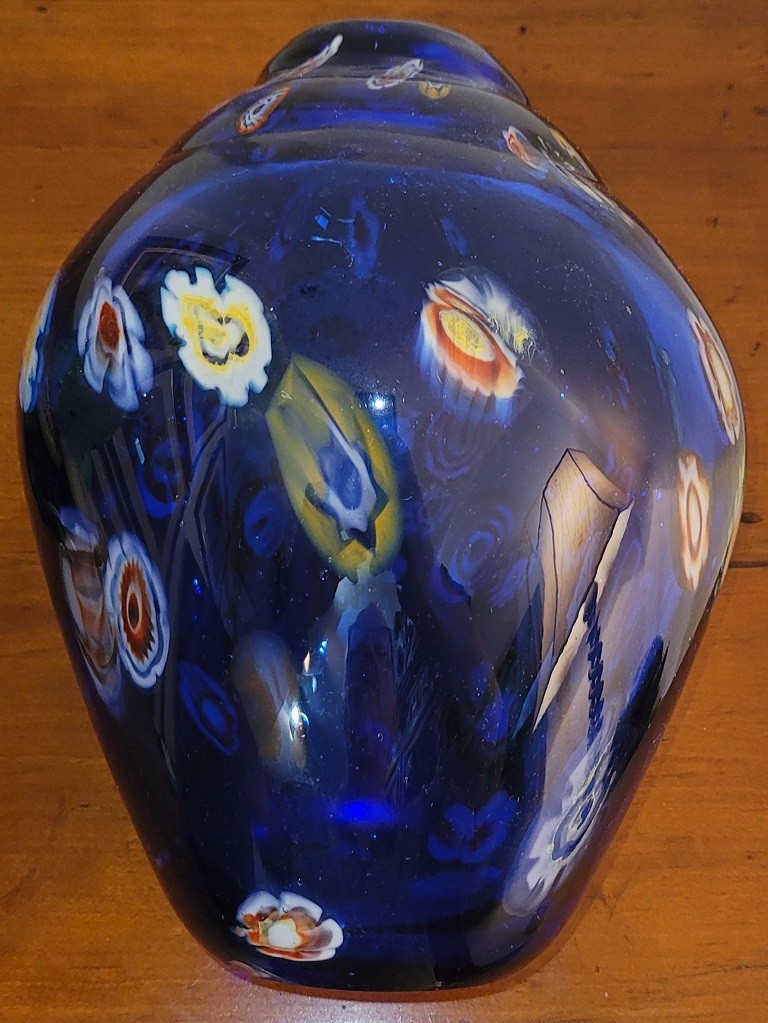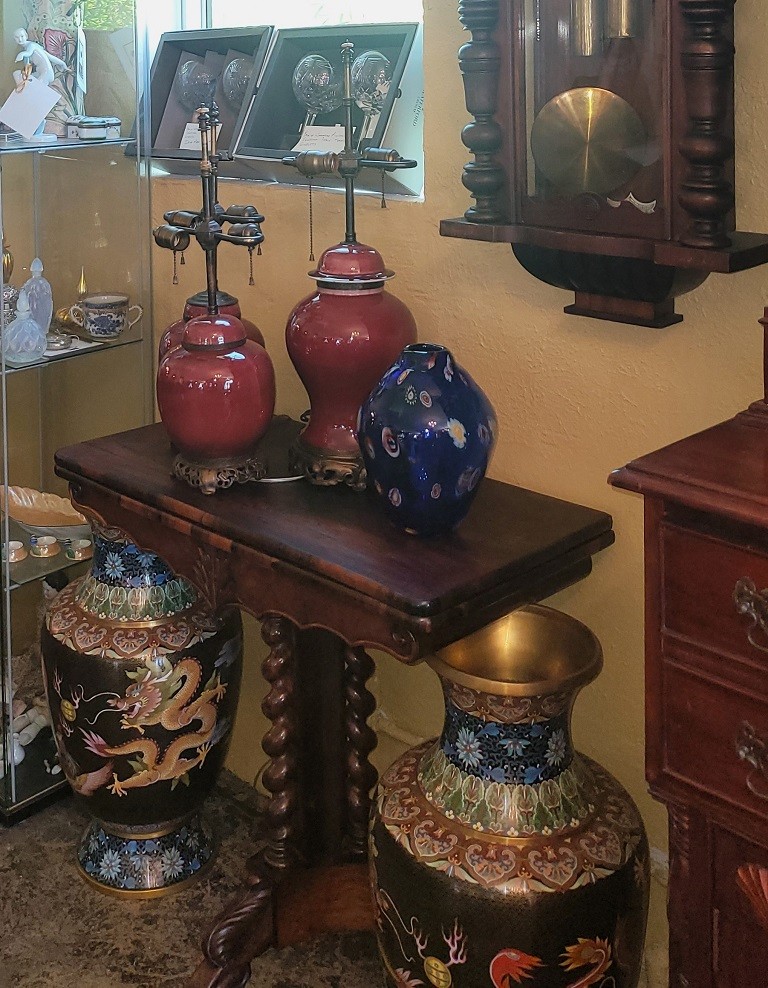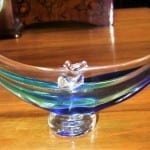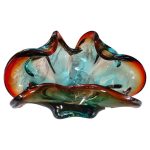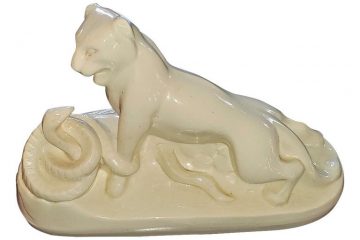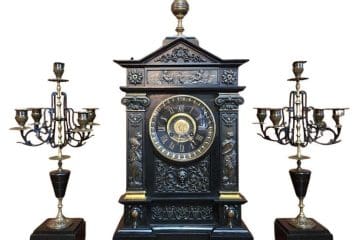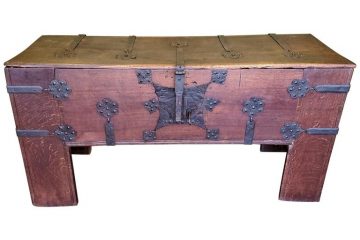Mid Century Murano Millefiori Style Art Glass Vase
PRESENTING A BEAUTIFUL Mid Century Murano Millefiori Style Art Glass Vase.
Made in Murano, Italy in the 1960’s.
Unsigned, but undoubtedly hand blown and hand made and decorated in Murano.
Chunky vase with cobalt blue art glass and millefiori style impressions in the glass throughout the piece.
Unlike most millefiori pieces, the use of the enamel floral impressions in this piece, are not ‘all covering’. They have been used more sparingly and in larger sizes than usual, which in our opinion makes this piece much more desirable and pleasing on the eye.
Very good original condition with no chips or cracks. Some very minor scratches due to normal wear and tear.
Weighs 7 lbs, is 24 cm tall.
The opening has a diameter of 4 cm and it is 18 cm wide/diameter at the center.
VERY STYLISH & DESIRABLE FOR A
MID CENTURY/CONTEMPORARY HOME!
Millefiori (Italian: [milleˈfjoːri]) is a glasswork technique which produces distinctive decorative patterns on glassware. The term millefiori is a combination of the Italian words “mille” (thousand) and “fiori” (flowers). Apsley Pellatt in his book Curiosities of Glass Making was the first to use the term “millefiori”, which appeared in the Oxford English Dictionary in 1849; prior to that, the beads were called mosaic beads. While the use of this technique long precedes the term “millefiori”, it is now most frequently associated with Venetian glassware.
Since the late 1980s, the millefiori technique has been applied to polymer clay and other materials. As the polymer clay is quite pliable and does not need to be heated and reheated to fuse it, it is a much easier medium in which to produce millefiori patterns than glass.
The manufacture of mosaic beads can be traced to Ancient Roman, Phoenician and Alexandrian times. Canes, probably made in Italy, have been found as far away as 8th century archaeological sites in Ireland. Millefiori beads have been uncovered from digs at Sandby borg, Öland, Sweden, dating apparently from the late 5th or early 6th century. A piece of millefiori was found, along with unworked garnets, in a purse at the early 7th century Anglo-Saxon burial site at Sutton Hoo.
The technical knowledge for creating millefiori was lost by the eighteenth century, and the technique was not revived until the nineteenth century. Within several years of the technique’s rediscovery, factories in Italy, France and England were manufacturing millefiori canes. They were often incorporated into fine glass art paperweights.
Until the 15th century, Murano glass makers were only producing drawn Rosetta beads made from molded Rosetta canes. Rosetta beads are made by the layering of a variable number of layers of glass of various colors in a mold, and by pulling the soft glass from both ends until the cane has reached the desired thickness. It is then cut into short segments for further processing
Mid Century Murano Millefiori Style Art Glass Vase.
Provenance: Bought at Auction in Europe.
Condition: Very good original condition with no chips or cracks. Some very minor scratches due to normal wear and tear.
Dimensions: Weighs 7 lbs, is 24 cm tall. The opening has a diameter of 4 cm and it is 18 cm wide/diameter at the center.
SALE PRICE NOW: $680
